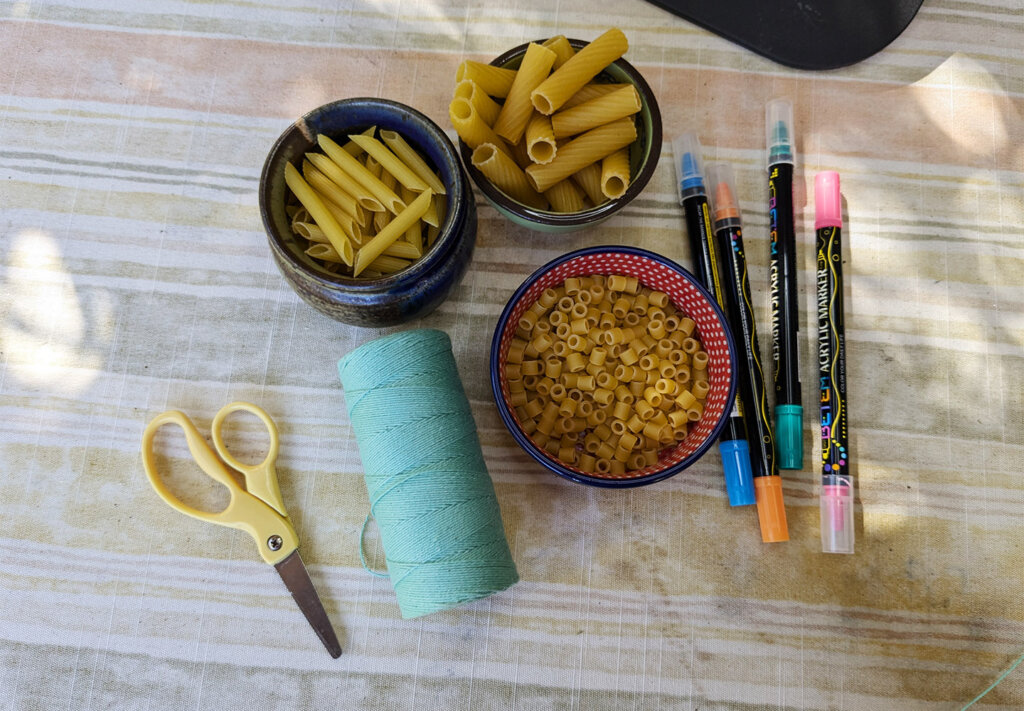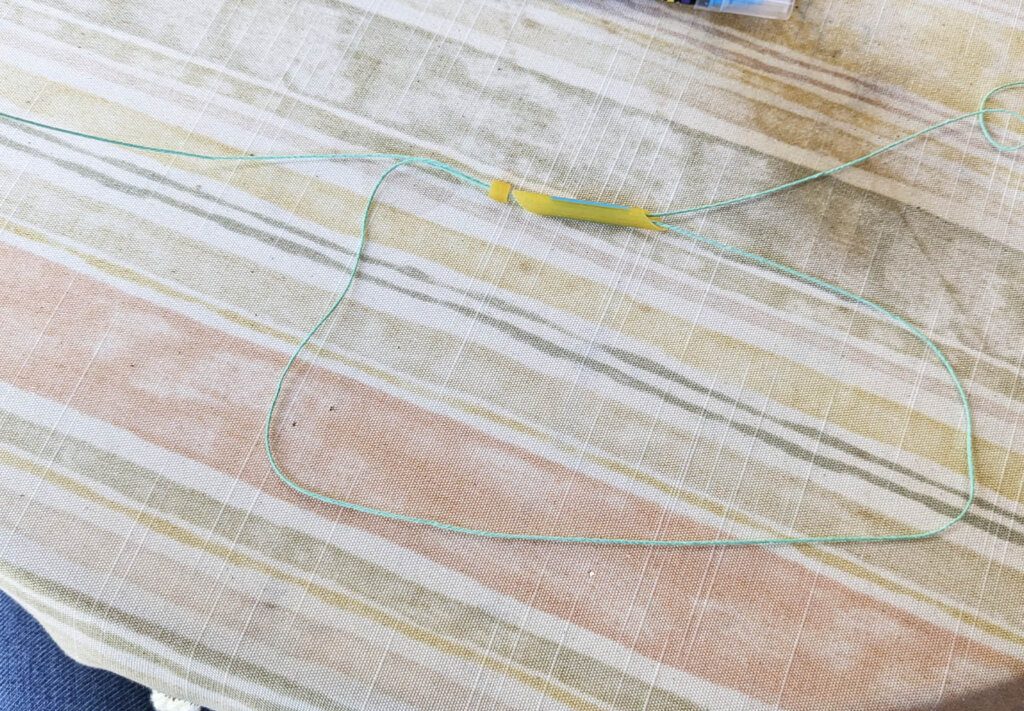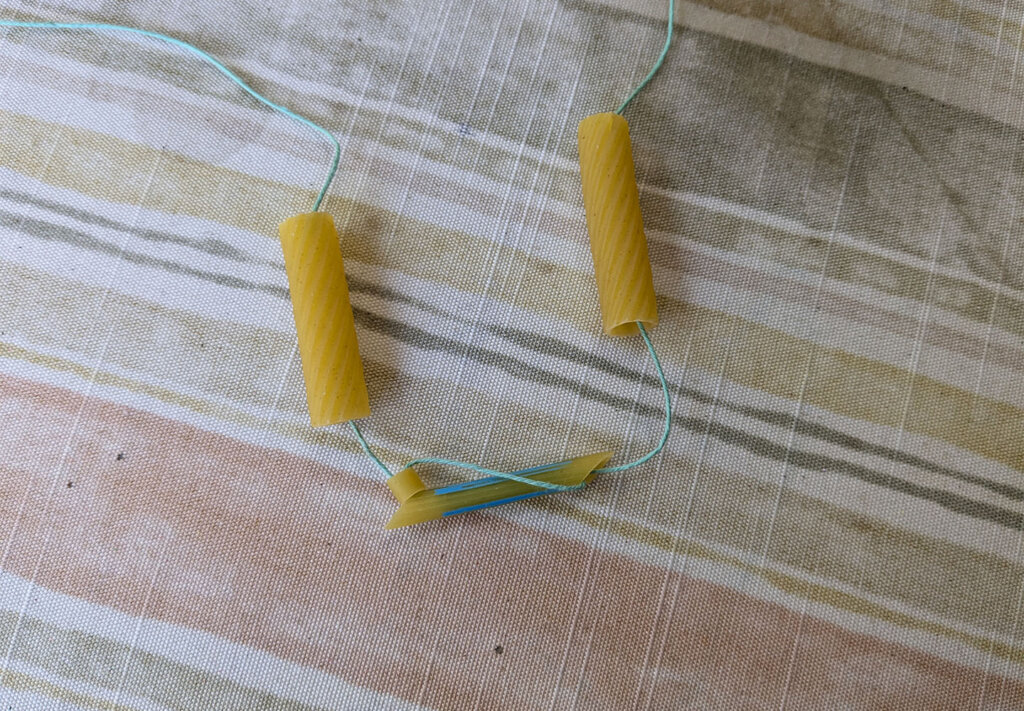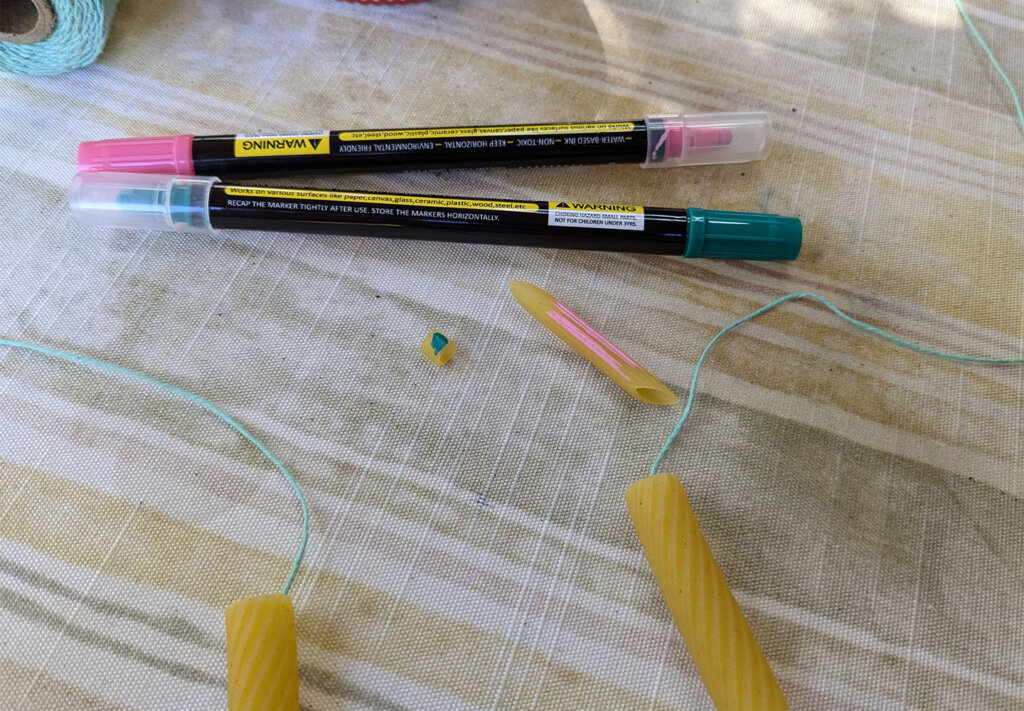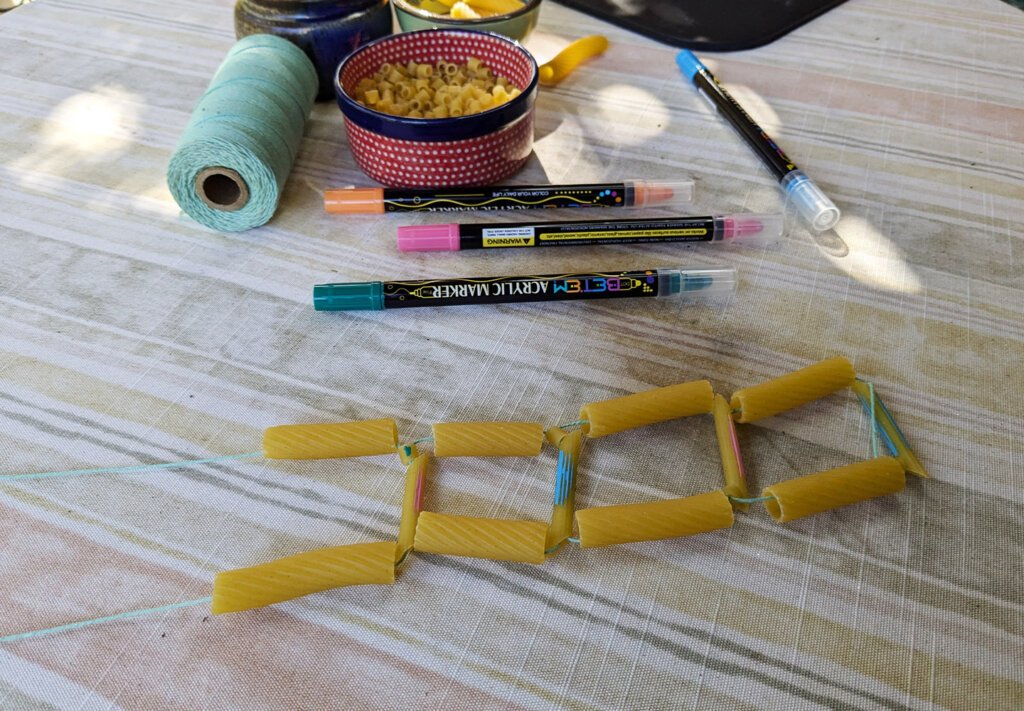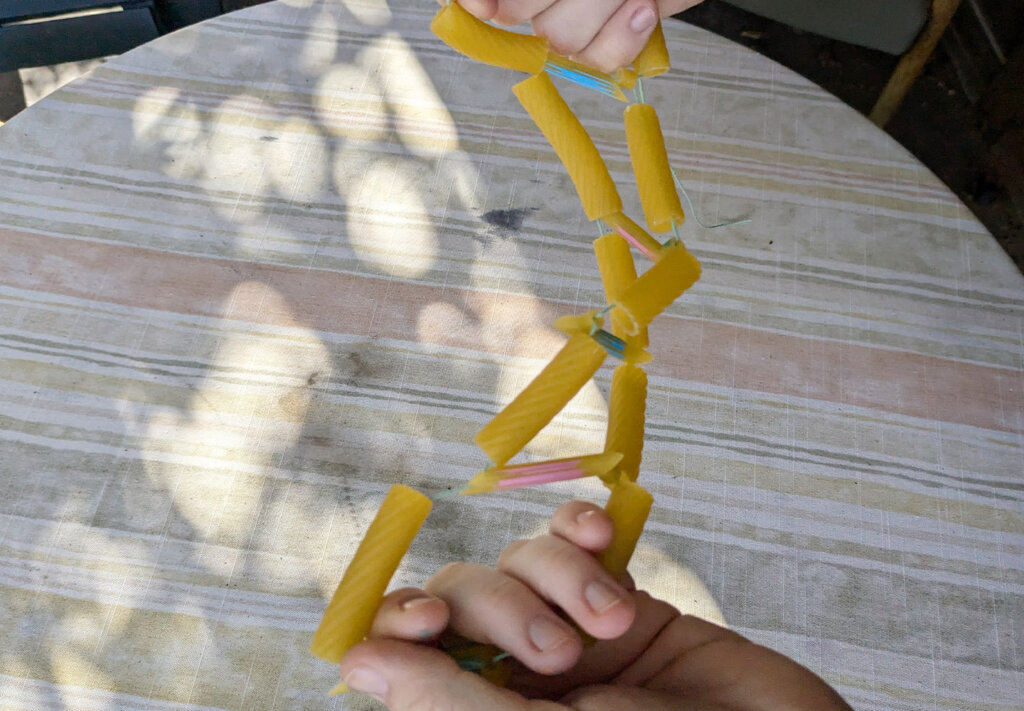Pasta DNA Models
Pasta DNA Models
Topic: DNA Structure
Empowerment Video: Genetics
Basic Supplies:
- Five string-able pasta shapes, 38 pieces per student (24 backbone pieces and 14 base pair pieces)
- Good backbone choices (1 variety): penne, rigatoni, or ziti
- Good base pair choices (4 varieties): elbows, wheels, cavatappi, dried tortellini, shellbows, anelli, or campanelli
- String or yarn
- Optional: Paint and paintbrushes to color-code the model
Note:
Before allowing students to select their pasta, the class must assign each base pair pasta to a nucleotide group (A, T, C, or G).
For example, if students will be working with elbows, wheels, shellbows, and cavatappi, the group may decide that elbows will be adenine (A), wheels will be thymine (T), shellbows will be cytosine (C), and cavatappi will be guanine (G).
Write this pairing on the board for student reference during the activity.
Background:
Share as little or much of this information as necessary based on student background knowledge.
DNA, or deoxyribonucleic acid, is the molecule that contains the instructions for building and operating all living things. It has a double-helix structure, like a twisted ladder. (Note: there is a downloadable PDF of the image below)

There are two strands forming the "backbone" or “rails” of the ladder. Inside the DNA, there are four types of nucleotide bases: adenine (A), thymine (T), cytosine (C), and guanine (G).
These nucleotide base pairs are essential because they carry the genetic code that tells cells what to do. These bases pair up in specific ways—adenine always pairs with thymine, and cytosine always pairs with guanine. Together, each base pair forms the "rungs" of the DNA ladder.
Video Discussion:
Ask, “What is DNA? What does it do?”
Allow students to briefly share their prior knowledge.
Share basic facts about DNA, if required, so that students have an understanding of the structure and function of DNA. See background section above.
Tell students that there is a career where people study DNA to understand how it works and how it affects our bodies.
Introduce the term geneticist and explain that geneticists study DNA and genes, which help them understand things like how diseases develop and how to create treatments based on our genetic information.
After watching the video Genetics, ask your students the following questions:
- What is the difference between genetics and genomics?
- One way that genes are expressed is through traits such as hair color. What traits do you have? How are these traits the same or different than your parents’ traits? Your sibling’s traits?
- Why do unrelated people have traits that are the same? For example, maybe you and your neighbor both have blue eyes.
- Is everything that makes you “you” based on your genetics? Explain your answer.
- How many chromosomes do you have? Where do your chromosomes come from?
- What is DNA and how does it act as a blueprint for our bodies?
Activity Instructions:
In this activity, you’ll build a model of DNA using pasta and string.
You will be focusing on how the backbone and nucleotide bases in DNA (A, T, C, and G) pair together. By building this model, you’ll get a closer look at the same structure that geneticists examine every day in their research.
- Select 24 backbone pieces and 14 base pair pieces. For the base pair pieces, you must select the appropriate matching base pairs. Hint: Remember that for every adenine (A) piece you select, you must select a matching thymine (T) piece. For every cytosine (C) piece, you must select a matching guanine (G) piece.
- Optional: Get five colors of paint. Use one color to paint all your backbone pieces. Then use the other four colors to color code your base pairs—one color for each base A, C, T, and G.
- Take a piece of string and string your first base pair. You can choose to either string an A and a T or a C and a G. Center these pieces in the middle of your string.
- Now, take the other end of the string and thread it through your first base pair in the opposite direction. Pull the ends tight.
- String two backbone pieces on each side of the string. Hint: This is four backbone pieces total.
- Select your next pair of bases, and thread them on one side of the string. Remember, A pairs with C and T pairs with G!
- Taking the other side of the string, thread it through only the base pair pieces. Make sure you are threading it in the opposite direction! Pull it tight.
- Repeat Steps 5-7 until you are out of base pair pieces.
- Tie a knot in the top of your string.
- Twist your string slightly to mimic the spiral shape of a DNA module.
- Now you’re ready to share your DNA model! As you display your model, explain how the backbone and base pairs work together to form the DNA structure. Remember, geneticists use their knowledge of DNA every day to study genes, understand diseases, and develop personalized medical treatments.
